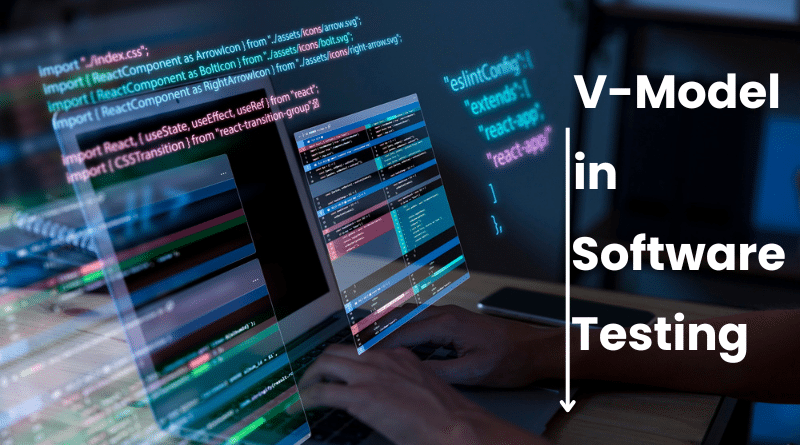
👉V-Model in Software Testing:
V-Model in Software Testing: A Complete Guide:
👉Introduction:
The V-Model (Verification and Validation Model) is a structured software development approach where the testing phase runs parallel to each development phase. It is an advanced version of the Waterfall Model, ensuring early defect detection and reducing the cost of fixes. This article explains the V-Model in detail, its phases, and how it compares to other software development models.
👉Key Software Engineering Terms:
V-Model in Software Testing: A Comprehensive Guide to SDLC & STLC:
👉1. SDLC (Software Development Life Cycle):
SDLC defines the structured sequence of activities developers follow to create high-quality software. It includes requirement gathering, design, implementation, testing, deployment, and maintenance.
👉2. STLC (Software Testing Life Cycle):
STLC consists of systematic testing activities that ensure the software meets requirements. It runs alongside SDLC in models like the V-Model.
👉3. Waterfall Model:
The Waterfall Model is a linear and sequential approach to software development, where testing starts only after the development phase is complete. However, this can lead to late defect detection and costly fixes.
👉Understanding the V-Model:
V-Model in Software Testing:
👉Example Scenario:
Imagine you are developing a custom software solution for a client. The logical sequence of steps you would follow includes:
- Requirement Gathering – Collect client requirements in detail.
- Design – Decide programming languages (Java, PHP, .NET) and databases (Oracle, MySQL) while planning the software architecture.
- Development – Write the actual code based on the design specifications.
- Testing – Verify that the software meets the client’s requirements.
- Deployment – Install and configure the software in the production environment.
- Maintenance – Update and fix issues as needed.
These phases mirror the Waterfall Model, but the issue is that testing happens too late in the process, increasing the risk of delivering a flawed product.
👉Problems with the Waterfall Model:
- Testing starts only after implementation, leading to late defect detection.
- Large and complex projects may overlook key details in the requirements phase.
- Mistakes in design and architecture may require a complete software redesign.
- Studies show that defects found in the early stages of development are much cheaper to fix compared to later stages.
👉Solution: The V-Model:
To overcome these challenges, the V-Model integrates a testing phase for every development phase, ensuring early bug detection and cost-effective fixes.
👉Structure of the V-Model:
- Left Side: Represents the Software Development Life Cycle (SDLC).
- Right Side: Represents the Software Testing Life Cycle (STLC).
- The entire model resembles the letter “V,” hence the name V-Model.
👉Phases of the V-Model:
| Development Phase | Testing Phase |
|---|---|
| Requirement Analysis | User Acceptance Testing |
| System Design | System Testing |
| High-Level Design | Integration Testing |
| Low-Level Design | Unit Testing |
| Implementation | Code Testing |
👉Key Benefits of the V-Model:
- Early Defect Detection: Testing is integrated at every stage, reducing errors in later phases.
- Cost-Effective: Fixing defects earlier is much cheaper than fixing them after deployment.
- Improved Quality: Ensures a high-quality product with fewer post-release issues.
- Clear Documentation: Well-defined phases enhance project clarity and execution.
👉Alternatives to the V-Model:
Apart from the V-Model, iterative development models offer flexibility in software development, including:
- Agile Development: Emphasizes iterative progress with continuous feedback.
- Rapid Application Development (RAD): Focuses on fast prototyping and user involvement.
- Incremental Model: Builds software in multiple, small deliverable parts.
Related Post: How to Become a Software Tester:-
👉Conclusion:
Selecting the right development model depends on the project’s requirements and goals. The V-Model ensures structured testing at every phase, making it a suitable choice for projects requiring high reliability and early defect detection. However, for projects requiring flexibility, models like Agile and RAD might be more suitable.
By integrating testing with development, the V-Model reduces defects, minimizes costs, and improves software quality, making it an essential approach in software engineering.
